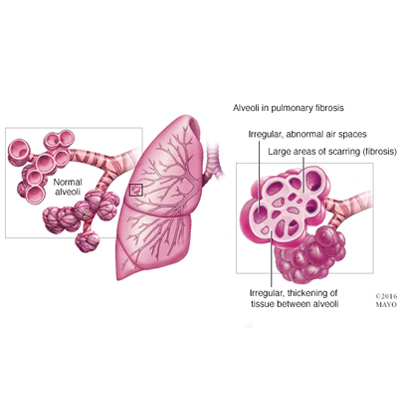Cystic Fibrosis.
Overview
Cystic fibrosis (CF) is a genetic disorder that causes severe damage to the lungs, digestive system, and other organs in the body.
It affects the cells that produce mucus, sweat, and digestive juices. Normally, these secretions are thin and slippery, helping to lubricate and protect organs. However, in people with CF, a defective gene causes these fluids to become sticky and thick, leading to blockages in the airways, ducts, and passageways.
This blockage results in chronic respiratory problems, digestive difficulties, and increased risk of infections. Cystic fibrosis is a lifelong, progressive condition, and though there is no cure, advances in treatment have significantly improved life expectancy and quality of life.
Symptoms of Cystic Fibrosis
-
Recurring chest infections (bronchitis, pneumonia)
-
Frequent, wet-sounding coughs with thick mucus
-
Wheezing and shortness of breath
-
Difficulty putting on weight or maintaining growth
-
Persistent diarrhea or greasy, foul-smelling stools (steatorrhea)
-
Nasal polyps (growths inside the nose)
-
Salty-tasting skin
-
Clubbing of fingers and toes (widening and rounding of fingertips due to chronic low oxygen)
Effects of Cystic Fibrosis
-
Respiratory system: Chronic infections, lung damage, bronchiectasis, respiratory failure.
-
Digestive system: Malabsorption, malnutrition, poor growth, vitamin deficiencies.
-
Reproductive system: Infertility in males, reduced fertility in females.
-
Other effects: Increased risk of diabetes, osteoporosis, and liver disease.
Treatment of Cystic Fibrosis
Treatment focuses on managing symptoms, preventing complications, and improving quality of life.
-
Airway clearance techniques (ACTs): Chest physiotherapy, breathing exercises to loosen mucus.
-
Medications:
-
Mucolytics (to thin mucus)
-
Bronchodilators (to open airways)
-
Antibiotics (for infections)
-
CFTR modulators (target the defective gene, effective in some cases)
-
-
Digestive support: Pancreatic enzyme supplements, high-calorie diet, vitamins.
-
Oxygen therapy (in advanced stages).
-
Surgery or lung transplant (for severe cases).
-
Homeopathy & holistic support (Spaks Homeopathy): Remedies like Kali bichromicum, Phosphorus, and Silicea may be used to ease mucus-related symptoms, improve immunity, and support overall well-being (under expert guidance).
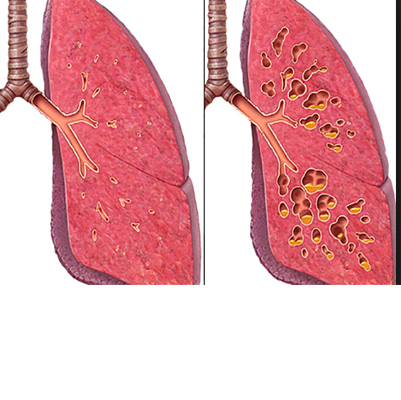
Hypercapnia
Overview
Hypercapnia (also called hypercarbia) is a condition that occurs when there is an excessive amount of carbon dioxide (CO?) in the blood.
It usually results from hypoventilation — when the lungs don’t take in enough oxygen or fail to expel enough carbon dioxide. Over time, CO? builds up in the bloodstream.
Common causes include:
-
Chronic lung diseases (COPD, emphysema, chronic bronchitis, asthma)
-
Obstructive sleep apnea
-
Neuromuscular disorders that affect breathing
-
Obesity hypoventilation syndrome
-
Use of sedatives or anesthetics that depress breathing
Signs & Symptoms
Mild to moderate hypercapnia (often gradual):
-
Fatigue
-
Headaches
-
Flushing of skin
-
Dizziness or lightheadedness
-
Difficulty concentrating or confusion
-
Shortness of breath (dyspnea)
-
Rapid breathing (tachypnea)
-
Elevated blood pressure
Severe hypercapnia (often sudden, medical emergency):
-
Severe shortness of breath
-
Confusion, agitation, or drowsiness
-
Muscle twitches or tremors
-
Irregular heartbeat
-
Loss of consciousness or coma
Effects
If left untreated, hypercapnia can lead to:
-
Respiratory acidosis (blood becomes too acidic)
-
Organ damage from reduced oxygen supply
-
Worsening of underlying lung or heart conditions
-
In extreme cases, respiratory failure and death
Treatment
1. Emergency Management
-
Oxygen therapy (carefully controlled in COPD patients)
-
Non-invasive ventilation (BiPAP/CPAP) or mechanical ventilation in severe cases
-
Medications to improve airflow (bronchodilators, corticosteroids for COPD/asthma)
2. Long-Term Management
-
Treating the underlying cause (COPD, sleep apnea, obesity, etc.)
-
Weight management and regular exercise to strengthen lungs
-
Pulmonary rehabilitation programs
-
Avoiding sedatives, smoking, and pollutants that worsen breathing
3. Homeopathic Supportive Remedies (under professional advice)
-
Antimonium tartaricum – for difficulty breathing with rattling in the chest
-
Carbo vegetabilis – for weakness, low energy, and poor oxygenation
-
Lobelia inflata – for breathing difficulty with chest tightness
-
Phosphorus – for respiratory weakness with fatigue
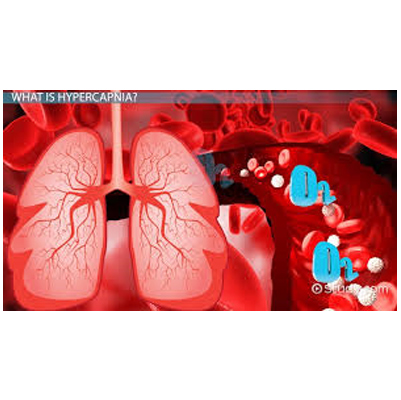
Hypersensitivity Pneumonitis
Overview
Hypersensitivity Pneumonitis (HP), also called extrinsic allergic alveolitis, is a rare immune system disorder that affects the lungs.
It is sometimes referred to by names linked to the environmental trigger, such as:
-
Bird fancier’s lung
-
Farmer’s lung
-
Hot tub lung
-
Humidifier lung
HP occurs when certain people breathe in specific environmental substances (like mold, bird proteins, or agricultural dust). The immune system reacts abnormally to these inhaled particles, causing short-term (acute) or long-term (chronic) inflammation in the lungs — especially in the interstitium (the tissue around the lung’s air sacs).
If untreated, this inflammation can lead to permanent scarring (pulmonary fibrosis), which reduces the lung’s ability to function.
Signs and Symptoms
Acute (sudden) HP
-
Flu-like symptoms: fever, chills, muscle or joint pain, headache
-
Dry cough
-
Shortness of breath (dyspnea)
-
Fatigue or weakness
Chronic (long-term) HP
-
Persistent cough
-
Wheezing or symptoms like chronic bronchitis
-
Worsening shortness of breath, especially with activity
-
Weight loss or anorexia
-
Fatigue and reduced exercise tolerance
-
Clubbing of fingers or toes (in advanced cases)
-
Signs of lung fibrosis on imaging
Effects of Hypersensitivity Pneumonitis
-
Reduced lung capacity and oxygen intake
-
Chronic bronchitis or progressive lung fibrosis
-
Decreased quality of life due to breathlessness
-
In severe, untreated cases → irreversible lung damage and respiratory failure
Treatment
1. Environmental Control
-
Avoidance of triggers is the most important step.
-
Identify and reduce exposure to mold, dust, bird droppings, or contaminated humidifiers.
2. Medications
-
Corticosteroids (e.g., Prednisone) – reduce lung inflammation.
-
Immunosuppressants (in some chronic cases) – help control overactive immune response.
3. Supportive Care
-
Oxygen therapy for advanced lung damage.
-
Pulmonary rehabilitation (breathing exercises, endurance training).
4. Lifestyle & Prevention
-
Use protective masks in dusty/moldy environments.
-
Keep humidifiers, air conditioners, and hot tubs clean.
-
Avoid keeping birds if allergic to bird proteins.
5. Advanced Care (Severe Fibrosis)
-
Lung transplantation may be considered if lungs are severely scarred and other treatments fail.
Key Point: Early diagnosis and strict avoidance of the triggering substance are crucial. With proper treatment, many people with HP can stabilize their condition and prevent long-term lung damage.
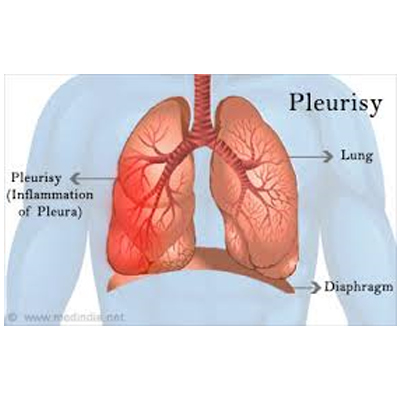
Hypoxemia
Hypoxemia / Hypoxia
Overview
Hypoxemia means low oxygen in the blood and hypoxia means low oxygen in the tissues. Both are dangerous conditions.
If the body does not get enough oxygen, the brain, heart, and liver can get damaged within just a few minutes.
Many people use the terms interchangeably, but medically they are different.
Symptoms
Skin turning blue or reddish
Confusion or lack of focus
Persistent cough
Fast heartbeat
Rapid breathing or shortness of breath
Slow heartbeat in severe cases
Excessive sweating
Wheezing sound while breathing
Effects
If not treated on time, it can lead to
Permanent brain damage
Heart failure
Organ dysfunction such as liver and kidney
Unconsciousness or coma
Death in extreme cases
Homeopathic Treatment
Carbo vegetabilis – for extreme weakness, bluish skin, and need for fresh air
Arsenicum album – for breathing difficulty with restlessness and anxiety at night
Antimonium tartaricum – for rattling sound in chest and difficulty in breathing
Phosphorus – for chest tightness, cough, and weakness
China (Cinchona officinalis) – for weakness, dizziness, and energy loss after illness
Quick Tips
Avoid smoking
Stay in fresh air
Practice deep breathing and pranayama
Seek immediate medical help if symptoms become severe
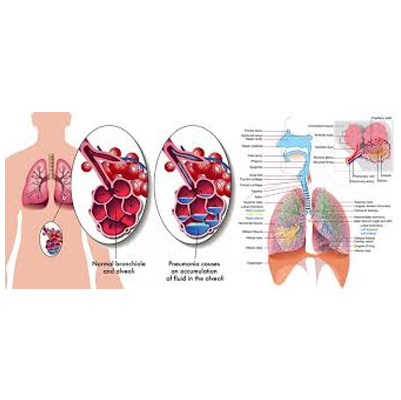
Hypoxia
Hypoxemia and Hypoxia
Overview
When your body does not get enough oxygen, you may develop hypoxemia (low oxygen in the blood) or hypoxia (low oxygen in the tissues). Both are serious conditions.
Without oxygen, vital organs such as the brain, liver, and heart can become damaged within minutes of symptom onset.
Hypoxemia can lead to hypoxia if the blood fails to deliver adequate oxygen to body tissues. The term “hypoxia” is often used to describe both conditions.
Symptoms
Skin color changes from blue to cherry red
Confusion or difficulty concentrating
Cough
Fast heart rate
Rapid breathing
Shortness of breath
Slow heart rate in severe cases
Excessive sweating
Wheezing or noisy breathing
Effects
If not treated promptly, hypoxemia and hypoxia can lead to:
Brain damage and cognitive decline
Organ failure, including heart and liver damage
Seizures or loss of consciousness
Respiratory failure
Sudden death in extreme cases
Homeopathic Treatment
Carbo vegetabilis – for extreme breathlessness, bluish skin, and faintness
Arsenicum album – for restlessness, anxiety, and difficulty breathing at night
Antimonium tartaricum – for wheezing with rattling in the chest
Phosphorus – for shortness of breath with weakness and cough
Lobelia inflata – for difficulty in breathing with chest tightness
Quick Tips
Seek emergency medical care immediately if severe breathing problems occur
Avoid smoking and polluted environments
Use oxygen therapy if prescribed
Practice deep breathing exercises under medical guidance
Maintain a healthy lifestyle with proper diet and exercise to support lung and heart health
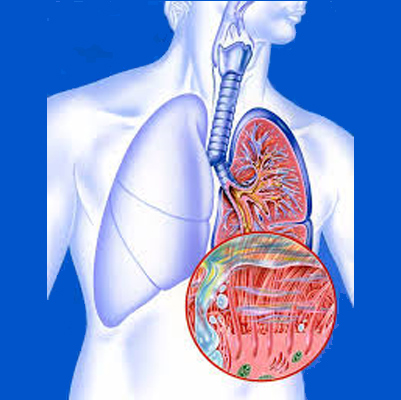
Obstructive lung
Overview
Obstructive lung disease is a group of respiratory conditions caused by blockages or obstructions in the airways, which make it difficult for air to flow in and out of the lungs. These blockages damage the lungs, narrow the airways, and result in breathing difficulties.
When a person breathes, air normally travels through the windpipe into smaller tubes called bronchi, which end in tiny air sacs called alveoli. In healthy lungs, the alveoli fill with air, pass oxygen into the bloodstream, and remove carbon dioxide during exhalation. In obstructive lung disease, this process is impaired, leading to reduced oxygen exchange and shortness of breath.
The main types include:
-
Chronic Obstructive Pulmonary Disease (COPD)
-
Chronic bronchitis
-
Emphysema
-
Asthma (chronic form)
Symptoms
-
Wheezing or whistling sound while breathing
-
Tightness or discomfort in the chest
-
Chronic cough (often producing mucus, especially in the morning)
-
A constant feeling of mucus in the throat
-
Fatigue or loss of energy
-
Unexplained weight loss (in advanced stages)
-
Blue tint on lips or nail beds (due to low oxygen levels)
-
Recurrent respiratory infections (bronchitis, pneumonia)
-
Swelling in the legs and feet (sign of advanced disease or heart strain)
Effects
-
Reduced lung function over time, making breathing progressively harder
-
Increased risk of respiratory failure and hospitalization
-
Impaired physical activity and reduced quality of life
-
Greater vulnerability to infections
-
Can strain the heart and lead to complications such as pulmonary hypertension or right-sided heart failure
Treatment
-
Lifestyle Measures
-
Quit smoking immediately (most important step)
-
Avoid exposure to dust, fumes, and pollutants
-
Regular physical activity to strengthen lungs and improve stamina
-
-
Medications
-
Bronchodilators: Relax the airway muscles to improve airflow
-
Corticosteroids: Reduce airway inflammation
-
Mucolytics: Help thin and clear mucus
-
Antibiotics: For bacterial infections
-
-
Therapies
-
Oxygen therapy in cases of severe oxygen deficiency
-
Pulmonary rehabilitation: Exercise training, breathing techniques, and counseling
-
-
Surgical Options (advanced cases)
-
Lung volume reduction surgery (removing damaged tissue)
-
Lung transplant in severe, end-stage disease
-
-
Prevention
-
Get vaccinated against flu and pneumonia
-
Maintain a healthy diet and weight
-
Regular checkups to monitor lung function
-
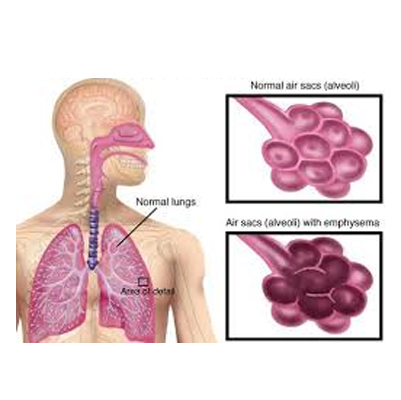
Pneumoconiosis
Pneumoconiosis
Overview
Pneumoconiosis is a group of lung diseases caused by inhalation of dust particles, which damage the lungs over time. The type of pneumoconiosis depends on the kind of dust inhaled, such as coal dust, silica, or asbestos fibers.
This condition is most common in occupational settings where dust exposure is frequent, such as mining, construction, or manufacturing. When these dust particles enter the lungs, they can trigger inflammation and scarring, making it harder for the lungs to function properly.
Pneumoconiosis is distinct from typical chest infections because the lung damage develops gradually over years, and the symptoms persist even after exposure has stopped.
Symptoms
Pneumoconiosis develops slowly, and symptoms may not appear immediately after dust exposure. Common symptoms include:
-
Difficulty breathing or shortness of breath
-
Persistent cough, which may produce phlegm
-
Chest tightness or discomfort
-
Fatigue and reduced exercise tolerance in advanced stages
Effects
-
Chronic lung inflammation and scarring (fibrosis)
-
Reduced lung function leading to difficulty performing daily activities
-
Increased susceptibility to respiratory infections
-
Risk of complications such as pulmonary hypertension or heart problems
-
Long-term disability in severe cases, affecting quality of life
Treatment
While pneumoconiosis cannot be completely cured, treatment focuses on managing symptoms and preventing further lung damage:
1. Avoiding Exposure:
-
Remove the individual from further dust exposure
-
Use protective equipment such as masks or respirators in occupational settings
2. Medications:
-
Bronchodilators to open airways and ease breathing
-
Cough suppressants for symptom relief
-
Anti-inflammatory medications to reduce lung inflammation
3. Oxygen Therapy:
-
For patients with severe shortness of breath or low oxygen levels
4. Pulmonary Rehabilitation:
-
Exercises and breathing techniques to improve lung function and stamina
-
Education on energy conservation and symptom management
5. Advanced Interventions:
-
In rare severe cases, lung transplantation may be considered
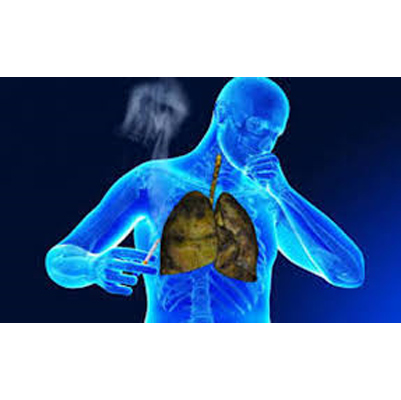
Pulmonary Fibrosis
Pulmonary Fibrosis
Overview
Pulmonary fibrosis is a lung disease in which the lung tissue becomes damaged and scarred. This thickened, stiff tissue makes it harder for the lungs to function properly. As the scarring worsens, breathing becomes increasingly difficult.
The scarring may result from various factors, including environmental exposures, infections, medications, or autoimmune diseases. However, in many cases, the exact cause is unknown, and the condition is then called idiopathic pulmonary fibrosis (IPF).
Symptoms
Common signs and symptoms of pulmonary fibrosis include:
-
Shortness of breath (dyspnea), especially during exertion
-
Dry, persistent cough
-
Fatigue and weakness
-
Unexplained weight loss
-
Aching muscles and joints
-
Clubbing, or widening and rounding of the fingertips or toes
Effects
-
Progressive loss of lung function, leading to difficulty performing daily activities
-
Chronic hypoxia (low oxygen levels), which can cause fatigue and confusion
-
Pulmonary hypertension, a type of high blood pressure in the lungs
-
Heart complications, especially right-sided heart failure (cor pulmonale)
-
Reduced quality of life due to breathlessness and chronic fatigue
Treatment
1. Medications:
-
Anti-fibrotic drugs (e.g., pirfenidone, nintedanib) to slow disease progression
-
Corticosteroids or immunosuppressants for inflammation in certain cases
-
Medications to manage symptoms such as cough or shortness of breath
2. Oxygen Therapy:
-
Supplemental oxygen to improve oxygen levels and reduce fatigue
3. Pulmonary Rehabilitation:
-
Exercise training, education, and breathing techniques to improve quality of life
4. Lifestyle Measures:
-
Avoiding smoking and lung irritants
-
Maintaining a healthy diet and weight
-
Vaccinations to prevent respiratory infections
5. Advanced Treatments:
-
Lung transplantation in severe cases where other treatments are insufficient
